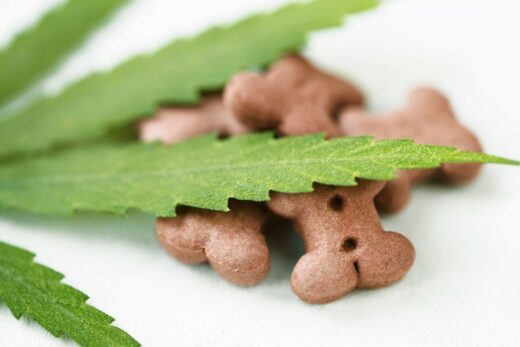You have probably heard of CBD oil by now. You may be using CBD oil yourself!
It is frequently touted as a cure-all magic pill for both humans and pets alike, but you may be hesitant to use it.
What is CBD oil? What can it do for your pet? Are tarehere any scary, dangerous side effects you need to watch out for?
As a responsible pet owner, you need all the facts you can get to make an informed decision for your cat or dog.
The bottom line is CBD is very safe and can be a fantastic addition to your plan for maintaining your pet’s wellbeing.
What Is CBD Oil?
Plants have been used throughout human history in medicine, magic, religious ritual, and folklore.
Anthropologists often find clusters of herbs on ancient remains; the famous ice mummy Ötzi, found in the mountains on the border between Austria and Italy in 1991, was discovered to have eaten medicinal wild herbs, ferns, and mushrooms shortly before he died and was carrying more with his supplies.
There is written evidence of medicinal plant use as far back as written human history goes. The ancient Sumerians created a guidebook of sorts: copies of a clay tablet listing hundreds of locally cultivated treatments including opium were kept in their government buildings and libraries.
Today, plants feature in a number of homeopathic remedies for various conditions. Walking into any store selling food and supplements, you can find chamomile teas for sleep and relaxation, echinacea pills to support immune health, ginger chews for digestive upset, and CBD tinctures for pain and inflammation.
CBD exploded on the natural health care scene and has been gaining traction steadily since. CBD stands for cannabidiol. It is one of 80 naturally-occurring cannabinoids found in the hemp plant.
Hemp is a close cousin to marijuana, but contains a significantly lower level of THC, or tetrahydrocannabinol, which is the chemical that induces the high you experience when you smoke marijuana.
Hemp is grown all over the world. It grows in poor soil, needs little care, and has a quick turnover rate: about every 60 days a hemp farmer can harvest and resow his fields. Hemp makes accessible, inexpensive, sustainable goods including raw materials for construction, fabrics for clothing, and folk medicine.
Hemp is grown, harvested, and beaten to a pulp. CBD is extracted from this pulp, which is then used to make paper and “press board” wood. The extraction is chemically separated to draw out impurities, then the CBD is distilled in alcohol. From there it is packaged and sold to consumers.
CBD was discovered accidentally in the 1940s by a team of researchers attempting to study how marijuana affects human bodies. These scientists connected the effects of CBD to a previously unknown structure, similar to the digestive or immune system, which they called the endocannabinoid system.
What Does The ECS Do?
The endocannabinoid system, or ECS, is a massive network of highly specialized receptors in the membranes of certain cells in all animal bodies.





